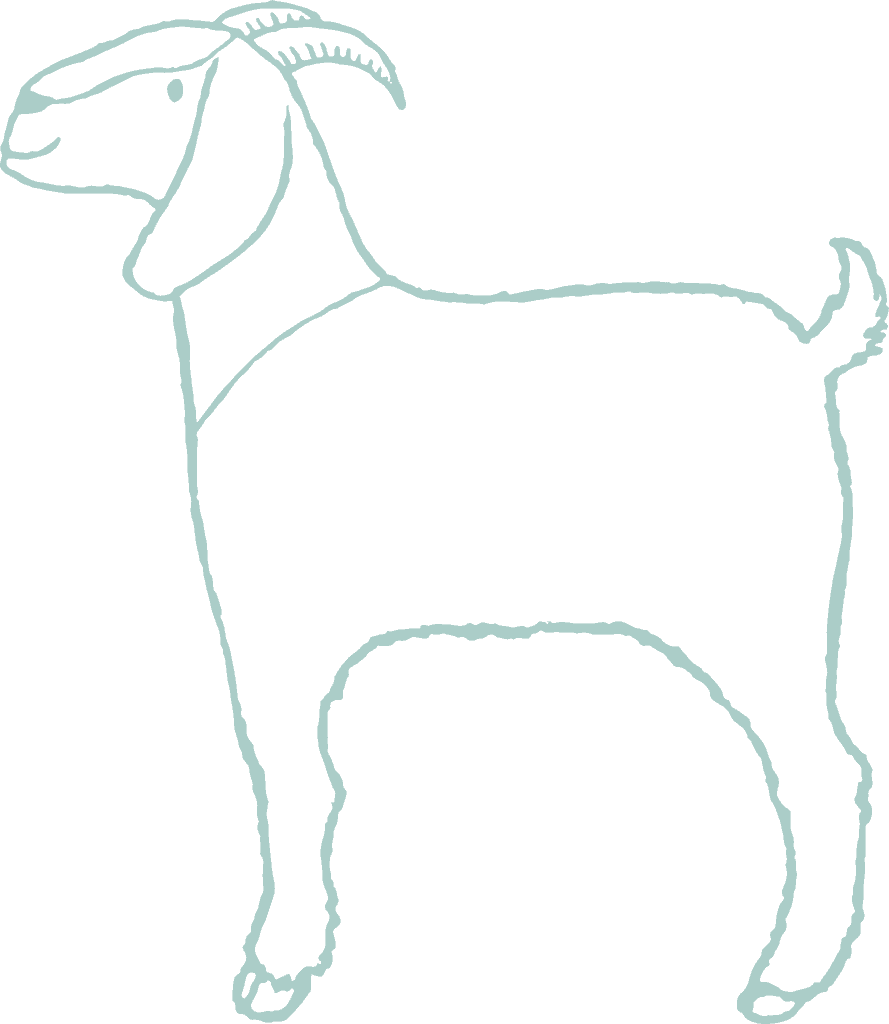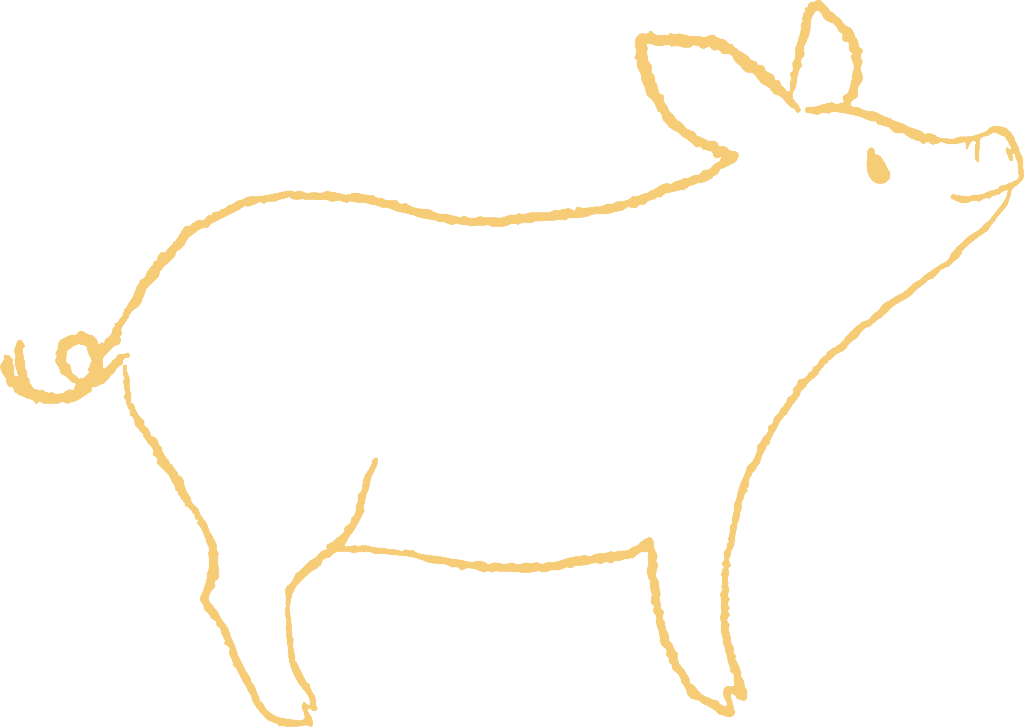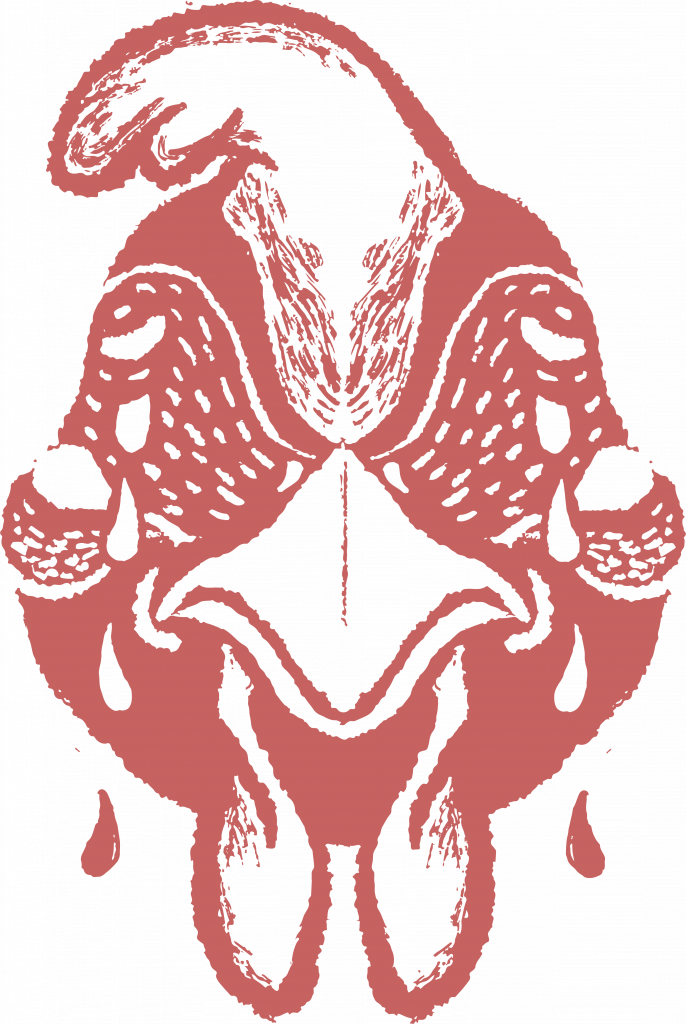
The last two years have been a struggle for everyone, including sanctuaries. Outside of the struggles to implement new safety protocols, work with limited volunteers and staff, and procure personal protective equipment, sanctuaries have also had to be concerned about whether the health of their residents is at risk. Things have changed over the past two years with moments of relief followed by renewed concerns as we have learned of mutations of covid 19 and the possible risks associated with it. In this everchanging landscape, where do we stand in terms of risks to residents (and staff)? Are there additional precautions sanctuaries should take? Let’s take a look at how animals are affected by the variants and whether this includes risks to resident species.
What Do We Currently Know?

We know that some nonhuman animal species, both domesticatedAdapted over time (as by selective breeding) from a wild or natural state to life in close association with and to the benefit of humans and wild, can be infected with COVID-19.
Big cats, nonhuman primates, otters, minks, ferrets, hyenas, bats, and white-tailed deer are some of the species that have had individuals test positive for covid. Domesticated cats and dogs also seem vulnerable to contracting covid 19 though the numbers are quite small. From the data we have, cats are more likely to contact covid than dogs. These cases are thought to be caused by contact with an infected human or, in the case of wild deer, the theories range from possibly caused by contact with other animals that had been infected by humans or contaminated water since covid remains in feces for a time. While many species are asymptomatic or only show mild symptoms, some, such as in the case of three endangered snow leopards in a zooAn organization where animals, either rescued, bought, borrowed, or bred, are kept, typically for the benefit of human visitor interest., succumbed to the illness and sadly died. Some species have received experimental vaccines such as apes and ferrets.
We know that no naturally occurring infections have been reported among commonly farmed animalA species or specific breed of animal that is raised by humans for the use of their bodies or what comes from their bodies. species (barring mink).
We know that some commonly farmed animal species may have a very low susceptibility to COVID-19 though many do not appear to have any susceptibility. This is discussed in greater detail later.

Other species, including a number of commonly farmed animal species, have been used in noncompassionate research in order to determine their susceptibility. Birds, other primates, hamsters, mice, raccoon dogs, rabbitsUnless explicitly mentioned, we are referring to domesticated rabbit breeds, not wild rabbits, who may have unique needs not covered by this resource., tree shrews, and others have all been used in non-compassionate research studies. Camelids, namely llamas, have been used to find a way to combat the virus in humans by researching their nanobodies.
We know that (aside from the origination) there has been little evidence of nonhuman animals playing a large role in the transmission of the virus among the human population.

There is currently no evidence of nonhuman animals infected by humans transmitting the virus back to humans, with the exception of mink. Minks are the only known species where the virus changed when they were infected, allowing it to be transmitted back to humans.
We know that there is potential for this to happen in other species but, thus far, it hasn’t been seen.
While much evidence points to the origination of SARS-Cov-2 (the virus that causes covid-19) to bats, thus far, there hasn’t been evidence of nonhuman animals playing a large role in the transmission of the virus among the human population. In fact, most species do not appear to be threatened by the virus, remaining clear of infection. However, on mink farmsFor-profit organizations focused on the production and sale of plant and/or animal products., humans transmitted the virus to the captive minks and a mutation occurred, allowing the virus to then be transmitted back to humans. This is currently the only known species where the virus can be transmitted back to humans. While there currently haven’t been any other known cases of new species affected by covid reinfecting the human population, it is concerning that there are now nonhuman animal reservoirs. Because of this, there is the future potential for new mutations occurring in infected nonhuman animal species that could be transmissible to the human population or other nonhuman animal species.
For both the safety of nonhuman residents and humans at sanctuaries, care should be taken. In addition to any current strategies your sanctuary may use to discourage predators or other wildlife that may present health concerns for residents, you may also want to consider strategies to prevent species who might carry Covid-19 from access to resident living spaces. Species may include deer, ferrets, and minks, though there may be others we learn about in the coming months.
We know that the Omicron variant is rapidly spreading and considered particularly contagious.
Omicron is the new variant that is rapidly spreading through the human population across the globe. Thus far, data is pointing to the variant as particularly contagious but possibly less likely to lead to hospitalization and deaths, though they can and have occurred. Extra caution is advised to avoid contracting or transmitting this virus to another.
We know there has been exploitive animal research studying the virus in farmed animal species. Sample sizes are small and younger, healthy animals are tested upon. Vulnerable populations, such as sick and senior animals, could possibly be more susceptible in species shown to have low susceptibility.

Let’s look at what the scientific community knows about the risk of different farmed animal species contracting COVID-19. Remember, existing and new variants have the potential to “behave” differently and one variant may affect different species while others do not. So even if data currently reflects no susceptibility or low susceptibility in certain species populations, this may change as more data is collected and different variants are studied. Additionally, the animals exploited in these studies are healthy and young. This may skew the data as it doesn’t fully inform on vulnerable populations. However, the following data does provide some evidence of levels of susceptibility in different farmed animal species.
Content Warning
The information below includes summaries from Non-Compassionate Resources involving the exploitationExploitation is characterized by the abuse of a position of physical, psychological, emotional, social, or economic vulnerability to obtain agreement from someone (e.g., humans and nonhuman animals) or something (e.g, land and water) that is unable to reasonably refuse an offer or demand. It is also characterized by excessive self gain at the expense of something or someone else’s labor, well-being, and/or existence. of nonhuman animals. A brief summary of information is provided at the beginning of each section that seeks to avoid descriptions that may be upsetting. For those seeking further information on the studies conducted or sources from where this information was obtained, click on the toggle button for a list and brief summary of the findings of each study. We chose to include these sources in order to provide the most accurate representation of existing data in an attempt at transparency and to combat misinformation. We do not endorse or condone exploitative animal research.
Susceptibility Of Commonly Farmed Animal Species
Ruminants
CowsWhile "cows" can be defined to refer exclusively to female cattle, at The Open Sanctuary Project we refer to domesticated cattle of all ages and sexes as "cows.", sheep, and goats
Cows, sheep, and goats are probably unlikely to get sick from SARS-CoV-2 and the current variants. Studies have been limited, but nothing suggests that they are at high risk of getting infected and sick. Cows do not currently pose a risk to other cows, other nonhuman animals, or humans. Even if the odd cowWhile "cow" can be defined to refer exclusively to female cattle, at The Open Sanctuary Project we refer to domesticated cattle of all ages and sexes as "cows." can get transiently and mildly infected, it’s very unlikely they would be able to pass the virus on to anyone else. Read more about the existing research by clicking on the toggle below.
SARS-CoV-2 Replicates In Respiratory Ex Vivo Organ Cultures Of Domestic Ruminant Species | Veterinary Microbiology
Another study reported low susceptibility in cows to SARS-CoV-2 (which causes COVID-19). Six cows were inoculated (the virus was introduced into their system) SARS-CoV-2 and placed with 3 cows who were not inoculated. Of the 6 cows inoculated, only 2 tested positive via nasal swab in the days following. No clinical signs were seen. The 3 uninoculated cows did not test positive.
Experimental Infection Of Cattle With SARS-CoV-2 | Emerging Infectious Diseases
Similar findings were reported in another study involving inoculation (“introducing” the virus to their systems) of 6 calves. Only 2 nasal swabs tested positive and 1 tissue sample and little or no evidence of virus replication were found.
Experimental Inoculation Of Young Calves With SARS-CoV-2 | Viruses
Another study reported low (but not zero) susceptibility in sheep and the unlikeliness of susceptibility in cows (or pronghorn antelope) though they acknowledge other studies that indicate a possibility of low-level susceptibility in cows. Sheep that had been infected with SARS-CoV-2 did not exhibit any clinical signs and they reported the virus seemed to have limited ability to transmit from sheep to sheep. However, the researchers note this doesn’t discount the possibility sheep might be able to transmit the virus to other more highly susceptible species.
Susceptibility Of Sheep To Experimental Co-Infection With The Ancestral Lineage Of SARS-CoV-2 And Its Alpha Variant | Natasha N. Gaudreault, Konner Cool, Jessie D. Trujillo, Igor Morozov, David A. Meekins, Chester McDowell, Dashzeveg Bold, Mariano Carossino, Velmurugan Balaraman, Dana Mitzel, Taeyong Kwon, Daniel W. Madden, Bianca Libanori Artiaga, Roman M. Pogranichniy, Gleyder Roman-Sosa, William C. Wilson, Udeni B. R. Balasuriya, Adolfo García-Sastre, Juergen A. Richt
In another study with an extremely small sample size per species, 3 goats were inoculated with SARS-CoV-2, 2 of which tested positive for COVID-19 but none of the goats or other animals exploited shed the virus over the course of the study. These particular findings indicate there is likely low, but not zero, susceptibility to COVID-19 in goats and a lower likelihood they spread infection.
Susceptibility Of Livestock To SARS-CoV-2 Infection | Emerging Microbes And Infections
Pigs
There is debate whether pigs have very little vs no susceptibility to the virus. Currently, the evidence doesn’t indicate a need for serious concern for pig health, pigs as a source of infection in people, or pigs as a potential reservoir for the emergence of new virus variants. While the odds of humans infecting pigs are low, it’s best to avoid exposing pigs to infected people whenever possible. Read more about the existing research by clicking on the toggle below.
None of the 9 pigs in the study showed signs of infection or tested positive after the virus was introduced through their nasal passage.
SARS-CoV-2 In Fruit Bats, Ferrets, Pigs, And Chickens: An Experimental Transmission Study | The Lancet Microbe
Of 16 pigs introduced to the virus, 5 were found to have had an immune response or demonstrate some level of exposure to the virus. One of the pigs was depressed and developed a cough. Several other pigs developed eye and nose discharge. No shedding of the virus was noted in any of the pigs, indicating low transmissibility.
Susceptibility of Domestic Swine to Experimental Infection with Severe Acute Respiratory Syndrome Coronavirus 2 | Emerging Infectious Diseases
Lung and tracheal tissue were taken from 3 pigs and used to test whether the tissue would support the viral replication of SARS-CoV-2. They found the tissue did not support replication of the virus.
SARS-CoV-2 Replicates In Respiratory Ex Vivo Organ Cultures Of Domestic Ruminant Species | Veterinary Microbiology
In this study, 9 pigs were introduced to the virus through nasal, tracheal, and oral routes. While the virus did show some replication in 2 pig cell lines (cells taken from and studied outside the body in an artificial environment), none of the 9 pigs showed any clinical signs, nor was there evidence of the virus replicating or evidence of antibody responses. Six other pigs were placed with those that had had the virus introduced to their systems and they showed no signs of infection.
Susceptibility Of Swine Cells And Domestic Pigs To SARS-CoV-2 | Emerging Microbes And Infections
Additional Studies:
Susceptibility Of Ferrets, Cats, Dogs, And Other Domesticated Animals To SARS–Coronavirus 2 | Science
Pigs Are Not Susceptible To SARS-CoV-2 Infection But Are A Model For Viral Immunogenicity Studies | Transboundaries And Emerging Diseases
Intravenous, Intratracheal, and Intranasal Inoculation of Swine with SARS-CoV-2 | Viruses
Update: COVID-19 in Animals Review Part 3: Pigs | Worms And Germs Blog
Birds
Chickens, TurkeysUnless explicitly mentioned, we are referring to domesticated turkey breeds, not wild turkeys, who may have unique needs not covered by this resource., DucksUnless explicitly mentioned, we are referring to domesticated duck breeds, not wild ducks, who may have unique needs not covered by this resource., And GeeseUnless explicitly mentioned, we are referring to domesticated goose breeds, not wild geese, who may have unique needs not covered by this resource.
Thus far, no evidence has been found that these birds have any susceptibility to the virus. Several studies involved either chickens, turkeys, ducks, and/or geese and found no evidence of any degree of susceptibility. Whew! Read more about the existing research by clicking on the toggle below.
Susceptibility Of Turkeys, Chickens And Chicken Embryos To SARS-CoV-2 | Transboundary And Emerging Diseases
In this study, 17 chickens were introduced to the virus through their noses. No one showed signs of disease, tested positive, or showed an antibody response to the virus.
SARS-CoV-2 In Fruit Bats, Ferrets, Pigs, And Chickens: An Experimental Transmission Study | The Lancet Microbe
The chickens in this study were introduced to the virus through their noses, eyes, mouths, and intravenously. No one developed any clinical signs, and no replication of the virus in their cells was found. Evidence of the virus was detected in their blood and tissues for days following the introduction of the virus. When chickens that hadn’t been introduced to the virus were placed with those who had, none of them became infected. Animal and translational models of SARS-CoV-2 infection and COVID-19 | MucosalImmunology
In this study, chickens, turkeys, Pekin ducks, Japanese quail, and White Chinese geese were introduced to the virus (some were introduced to a different virus). No one developed any signs of disease, and evidence of the virus was not found in any swabs collected. No antibodies were detected in any of the birds 14 days after introduction to the virus. This indicated that the virus did not replicate or that replication was so low it couldn’t be detected. Lack of susceptibility of poultry to SARS-CoV-2 and MERS-CoV | Emerging Infectious Diseases
Camelids
Llamas And Alpacas
Unlike other species we have discussed above, llamas and alpacas are being used to create possible treatments for COVID-19. While our (and many other species) bodies produce antibodies as a response to a virus such as covid, camelids produce really small antibodies, called nanobodies, as an immune response. These nanobodies are thought to better bind with the virus, ideally neutralizing it. Read more about the existing research by clicking on the toggle below.
In this study, two alpacas were intentionally introduced to the virus causing COVID-19 and neither tested positive.
Susceptibility Of Livestock To SARS-CoV-2 Infection | Emerging Microbes And Infections
Equines
Horses And Donkey
Overall, the health risk to horses and donkeys from SARS-CoV-2 is probably very low. There currently isn’t any indication that we’re seeing a disease impact in these species. At this point, horses are not thought to be susceptible to the virus. We didn’t find any research on donkeys. While not the same as the research being done on llamas and alpacas, there have been attempts to exploit horses to study and possibly create treatment options to be later tested for human use. Read more about the existing research by clicking on the toggle below.
This study found horses unlikely to be susceptible to COVID-19 after 34 horses tested negative after daily exposure to infected humans over the course of 14 days.
No Detection Of SARS-CoV-2 In Animals Exposed To Infected Keepers: Results Of A COVID-19 Surveillance Program | Future Science OA
Update: COVID-19 In Animals Review Part 5: Horses | Worms And Germs Blog
Rabbits
There is some indication both through experimental tests and predive computer models that rabbits may be susceptible to COVID-19. However, transmission to other rabbits is currently thought to be low, and there is no evidence of transmission to humans. Read more about the existing research by clicking on the toggle below.
Susceptibility Of Rabbits To SARS-CoV-2 | Emerging Microbes And Infections
Based on the ACE2 (A protein on the surface of certain types of cells) in rabbits, a computer-based model demonstrates the possible interaction of SARS-CoV-2, resulting in the binding of the virus with the protein. The findings predict that rabbits may be susceptible to contracting COVID-19. Severe Acute Respiratory Syndrome Coronavirus 2 (SARS-CoV-2) Exhibits High Predicted Binding Affinity to ACE2 from Lagomorphs (Rabbits and Pikas) | Animals
- Do not interact with residents if you have tested positive for covid 19 or are symptomatic and have not been tested yet.
- If a resident is exhibiting signs of illness or you are concerned they may have been exposed and are unsure what to do, contact your veterinarian.
- Stay up-to-date on new developments regarding variants and how animals may be affected. We will be updating this resource as new information is available.
- Develop sound health policies for staff and volunteers i.e. stay home if you are symptomatic, provide personal protective equipment.
- Although many farmed animal species are showing low or no susceptibility to the current variants, ere on the side of caution and avoid interacting with residents, particularly those vulnerable due to illness or age, if you have symptoms or test positive. If you must, be sure to where a properly fitting disposable mask.
- Adhere to quarantineThe policy or space in which an individual is separately housed away from others as a preventative measure to protect other residents from potentially contagious health conditions, such as in the case of new residents or residents who may have been exposed to certain diseases. protocols for incoming residents. Check out our resource on quarantine policies!
- Due to the “spillover” of COVID-19 into certain wildlife species, ensure you have compassionate wildlife policies in place to reduce contact between residents and potentially affected wildlife.
- If you take in wildlife at your sanctuary, read the CDC’s recommendations for wildlife rehabilitation centers and stay tuned for our resource on Covid Care Considerations For Wildlife.
- If you care for dogs or cats, especially cats, protect them by keeping them away from anyone with symptoms or anyone who tested positive. Cats are more prone to contracting COVID-19 than dogs and those that wander freely on sanctuary grounds could potentially transmit the virus to susceptible residents (although there is no evidence that currently indicates there is a high risk of this with the current variants).
- Stay safe, practice self care, check in with one another, and hang in there.
- Check out our resource, What Can Animal Sanctuaries Do During The COVID-19 Outbreak?, for tips on engaging the public, updating contingency plans and more.
Summary
We know that is a lot of information to take in. We will be updating this resource as new information is available. Here is a summary of what we have just covered. We hope by providing this information it helps you make the best care decisions possible, keeping staff and residents healthy and happy.
- There are a number of nonhuman animals, both wild and domesticated, that have naturally contracted the virus, including white-tailed deer, ferrets, minks, otters, primates, domesticated and wild cats, hyenas, and domesticated dogs.
- Mice may be susceptible to new variants but were not found to be susceptible to the original SARS-CoV-2 virus
- In research settings, a number of other nonhuman animal species were exploited in order to determine their risk to the virus including, pigs, cows, rabbits, antelope, sheep, goats,
- Most animals became infected through contact with an infected human though it is possible some became infected from other animals who were first infected by humans.
- Some species are more susceptible than others, as is the case with cats versus dogs. Cats are more susceptible than dogs.
- Of the nonhuman species affected, only mink that have contracted the virus have transmitted it back to humans through a mutation in the virus.
- Although there have been no reported cases of commonly farmed animal species being naturally infected, there has been experimental research on these species that has indicated certain species may have a low susceptibility and, if infected are unlikely to spread it easily to others. This varies from species to species.
- Thus far, birds have not shown to be susceptible to the virus.
- Some farmed mammal species may have a low risk of becoming infected but are unlikely to pass on the virus to others.
- New mutations, particularly mutations that may occur in infected nonhuman animal species have the possibility of mutating in such a way that the virus becomes transmissible back to humans in the future but, thus far, are not considered a high risk.
- Caution is advised for those working with or caring for nonhuman animals. If you have contracted COVID-19, limiting contact with species under you care is the safest precaution, as things develop and we learn more about variants.
ADDITIONAL SOURCES:
Animals And COVID-19 | Center For Disease Control
Reducing The Risk Of SARS-CoV-2 Spreading Between People And Wildlife | Center For Disease Control
SARS-CoV-2 Exposure In Wild White-Tailed Deer (Odocoileus Virginianus) | USDA/APHIS
Questions And Answers: Results Of Study On SARS-CoV-2 In White-Tailed Deer | USDA
Confirmation Of COVID-19 In A Cougar At A Wild Animal Exhibitor In Texas | USDA
List of SARS-CoV-2 Cases | USDA
Black-Footed Ferret COVID-19 Vaccination Seems To Be Working | The Wildlife Society
Apes Receive Experimental Coronavirus Vaccine | The Wildlife Society
If a source includes the (Non-Compassionate Source) tag, it means that we do not endorse that particular source’s views about animals, even if some of their insights are valuable from a care perspective. See a more detailed explanation here.









